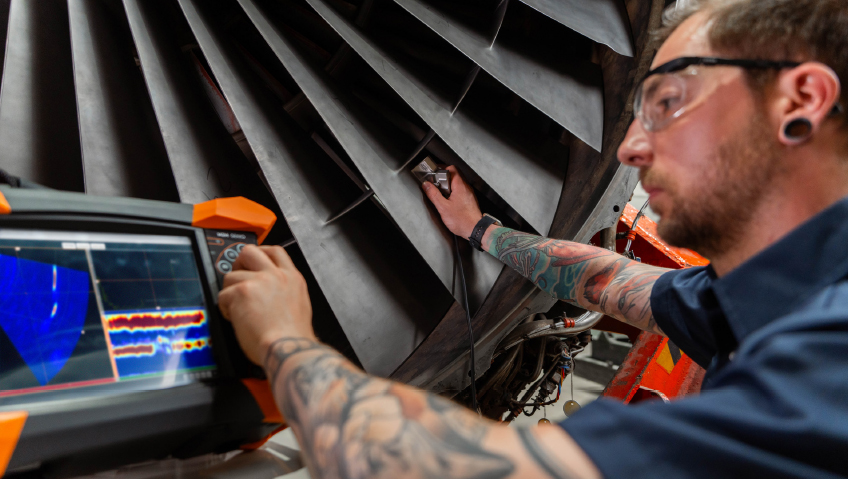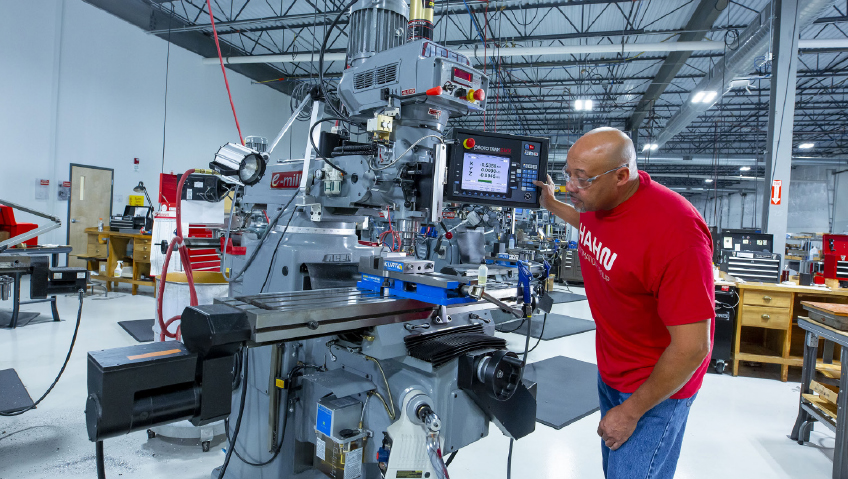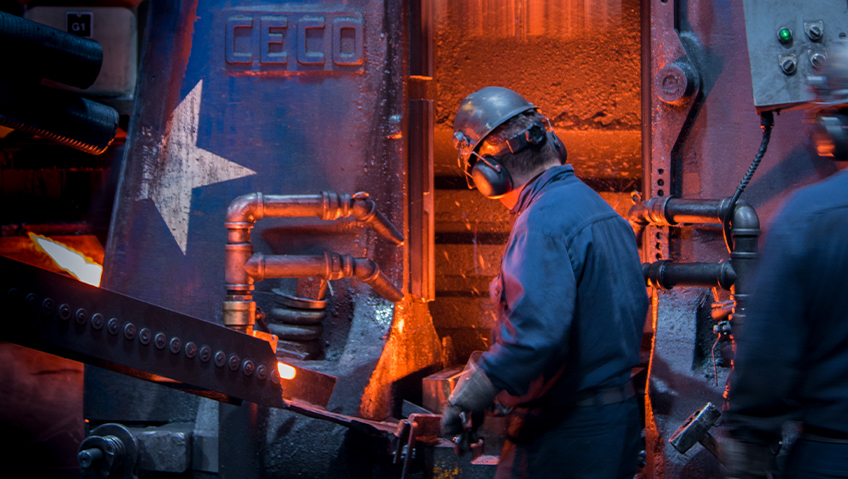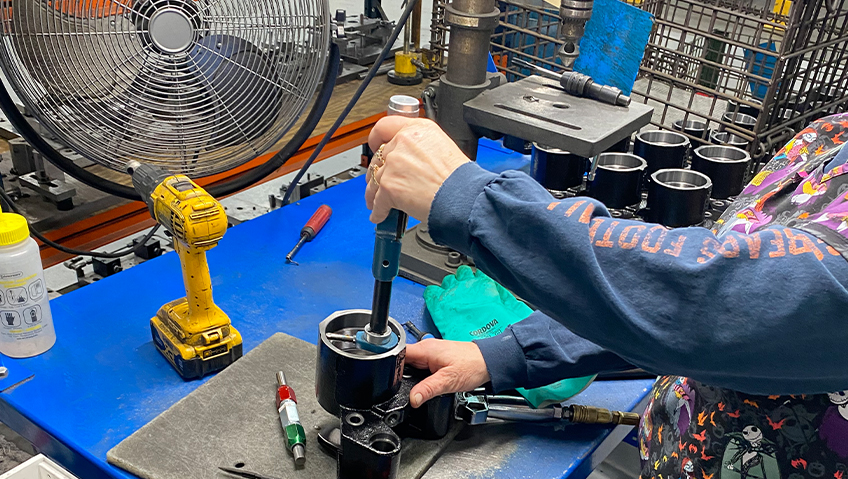Being the best in one of the most competitive industries in the world means being technologically more advanced and faster than competitors. Famous for introducing myriad industry firsts, Eddyfi Technologies leverages leading technology, some of the industry’s brightest minds, and strategic acquisitions.
Aimed at the power generation industry, Eddyfi Technologies launched its latest nondestructive ultrasonic inspection technology upgrade, Panther 2, this year. The company is the go-to for global giants in energy generation, transportation, aeronautical, military, and others in search of custom-designed nondestructive testing (NDT) equipment, inspection scanning, and robotics. Following three years of research and development on Panther 2 and several acquisitions over the past seven years, the company’s most recent purchase has seen its capabilities soar even further.
Eddyfi’s other products—which include sensors, instruments, and software—are popular for use on bridges, windmills, hydroelectric dams, pipelines, and nuclear power plants.
Just over 18 months ago, Eddyfi Technologies acquired former adversary Zetec, also specializing in ultrasonic and eddy current arrays. This technology is applied in manual devices to simplify equipment inspection by efficiently scanning large surface areas. “The acquisition is good for us,” says Frederic Reverdy, senior application and products engineer, about the two research and development teams that are teaming up to create some of the best NDT software available. “I have learned a lot from my colleagues. I hope they have learned a lot from me as well,” he adds.
At home in Quebec City, Canada, Eddyfi Technologies provides customers with innovative products that protect and improve complex, large-scale critical infrastructure on a global scale. The company saves clients’ money while keeping staff, nature, and urban zones around large industrial plants safe. With its next-generation science in NDT inspection tools, international service firms and original equipment manufacturers have turned to Eddyfi for customized innovation since 2009.
Today, as Zetec settles in, the company aims to develop a single product line, merging the strengths of each existing collection into a single potent offering. “We’re pretty excited for the future—to see the combination [of technologies] between the two companies,” Reverdy shares. Across North America, Europe, and beyond, the merger has turned Eddyfi Technologies into a powerhouse with which to be reckoned.
The new acquisition came complete with technology of its own. Launched in October this year when the Eddyfi team attended the American Society for Nondestructive Testing (ASNT) conference in Houston, Ultravision is a sophisticated phased array ultrasonics analysis tool. The new software is the first step toward blending the best of the product lines that exist between Eddyfi Technologies and Zetec.
“Ultravision is probably the most powerful software in terms of analysis for phased array ultrasonics on the market,” Reverdy says, explaining that this product made Zetec an excellent acquisition as the technology surpasses what was previously available through Eddyfi Technologies. In addition, customers who own Eddyfi technology can easily align the new Ultrasonic software with their existing products.
The company’s approach to garnering new business is pragmatic, as is its drive to provide the best NDT technology available. The result is a detail-oriented sales process that sees to it that no aspect of client requirements is left unstudied. After its sales managers introduce its technical team to prospective new clients needing quality inspection solutions, designers set out to analyze their exact requirements and identify issues to offer them an optimal product. For those with complex problems, even more sophisticated, custom technology is inevitable. That follows feasibility studies using simulation software, ensuring the correct technology is applied for the job.
To further enhance its capabilities, another 2023 acquisition, Sensor Networks, based in Pennsylvania, contributes the latest in remote visual inspection instruments, phased array and conventional ultrasonics probes, and corrosion monitoring systems with permanently installed ultrasonic testing equipment, adding thee capabilities to Eddyfi’s already generous range of technologies. Sensor Networks “is going to help us promote our own probes,” Reverdy says. “Now we have a portfolio, so we can propose the system, the probes, and the scanners.”
Serving a large portion of the oil and gas industry, its phased array testing equipment is especially popular in identifying corrosion in refineries and pipelines to prevent gas and oil leakages. According to Reverdy, the nuclear industry is also increasingly turning to Eddyfi for the latest in its advanced ultrasonic equipment for similar reasons. He cites an emergency in France last year at one such plant, where half the facility had to be closed for urgent inspection when a significant equipment defect nearly ended in disaster. Thanks to its leading-edge technology, the worst-case scenario was avoided as Eddyfi Technologies saved the day, the client’s assets, and potentially many lives.
Its ever-evolving product lines comprise both portable and stationary products. Lightweight and portable, its Gecko, Topaz, and Mantis lines focus on in-service inspections of aircraft, refineries, and pipelines, identifying dangerous weaknesses such as cracks or erosion. The second selection includes software comprising its Panther 2 and Emerald suites. Reliant on main grid power sources, these stationary systems are typically used in fabrication facilities where infrastructure components like plates, bars, and pipes must be inspected before dispatch and integration into industrial plant construction.
These software systems, especially the new Panther 2, are most popular amongst systems integrators needing thorough inspection equipment for new third-party systems. “Typically, you want this [process] to be very fast. You do not want NDT to be the bottleneck of manufacturing,” Reverdy says, noting that systems integrators “buy our product and put it into their solution.” The system comes with software development kits and operational support. About 20 percent of the customer base using the system is made up of independent or company-based research teams, Reverdy estimates.
As a significant upgrade to its forerunner, Panther 1, Panther 2 features improved data upload capacities. Based on fixed sensory data collection, transfers happen via optical fibre or high-speed Ethernet plug-ins. Improved scanning speeds translate into faster data analyses, making inspections lightning-fast. Eddyfi typically introduces software feature enhancements to accompany its hardware upgrades, ensuring systems run as efficiently as possible. “This precise nondestructive testing instrument is helping other OEMs optimize their processes,” says Content Marketing Manager Priscilla Johnson.
A surprising result of the intensive research and development that follow every new launch is the unique applications for products that customers come up with that the team might never have considered, like when inspection teams in refineries started using its Gecko system to prevent high-temperature hydrogen attacks, a potentially lethal equipment defect resulting from dry, hot conditions driving methane build-up caused by atomic hydrogen reacting with equipment steel. This forces the metal to split open, potentially causing havoc in such plants. As Eddyfi’s Gecko system worked brilliantly at preventing the issue, it became a part of the International Standards Organization’s (ISO) and the American Society of Mechanical Engineers’ (ASME) standards code for the industry.
“More and more people use the technology. As a manufacturer, we spend [a lot of time improving] the scanning speed, technology, et cetera. The Panther 2 is a good example of that,” says Reverdy, explaining that its total focusing method (TFM), an advanced imaging technique delivering accurate results over large areas, demands higher processing power.
Delivering faster real-time data feedback necessitates top-speed, state-of-the-art hardware, and to make it, all graphic cards must be updated annually. On the upside, replacing graphic cards instead of entire systems saves having to buy new technology every year while gaining faster speeds—a major cost benefit for customers. While improved speeds take precedence, ensuring operational ease drives Panther 2 and all Eddyfi products, for that matter.
“We are the first one to promote TFM,” Reverdy says, and Eddyfi’s competitors followed its lead in applying the technology for inspection purposes. Reverdy feels that Eddyfi remains ahead of the competition. “It is a sure thing in my opinion,” and that attitude pushes the company ever forward. “When everybody does it, you have to do it better.”






